Estimation of PM10 Levels and Sources in Air Quality Networks by Digital Analysis of Smartphone Camera Images Taken from Samples Deposited on Filters
Abstract
1. Introduction
2. Materials and Methods
2.1. Instruments and Software
2.2. Sample Collection
2.3. PM10 Gravimetric Reference Method
2.4. Image Acquisition System and Procedure
2.5. Image Processing and Analysis
2.6. Saharan Dust Outbreak Identification
3. Results and Discussion
3.1. General Colour Features of PM Filters
3.2. Overall Correlation Between Color Parameters and PM Concentration
3.3. Influence of PM Source Variability on Colour Parameters
3.4. Source Assignment Based on Colour Parameter Analysis
3.4.1. Local Sources at Sampling Point
3.4.2. Remote Sources
4. Conclusions
Supplementary Materials
Author Contributions
Funding
Acknowledgments
Conflicts of Interest
References
- WHO (World Health Organization). Ambient Air: A Global Assessment of Exposure and Burden of Deseases. WHO Library Cataloguing. 2016. Available online: http://www.who.int/iris/bitstream/10665/250141/1/9789241511353-eng.pdf?ua=1 (accessed on 12 June 2019).
- Karagulian, F.; Belis, C.A.; Dora, C.F.C.; Prüss-Ustün, A.; Bonjour, S.; Adair-Rohani, H.; Amann, M. Contributions to cities’ ambient particulate matter (PM): A systematic review of local source contributions at global level. Atmos. Environ. 2015, 120, 475–483. [Google Scholar] [CrossRef]
- Hauck, H.; Berner, A.; Gomisack, B.; Stopper, S.; Puxbaum, H.; Kundi, M.; Preining, O. On the equivalence of gravimetric PM data with TEOM and beta-attenuation measurements. J. Aerosol Sci. 2004, 35, 1135–1149. [Google Scholar] [CrossRef]
- Grimm, H.; Eatough, D.J. Aerosol measurement: The use of optical light scattering for the determination of particulate size distribution, and particulate mass, including the semi-volatile fraction. J. Air Waste Manag. 2009, 59, 101–107. [Google Scholar] [CrossRef]
- Patashnick, H.; Rupprecht, E.G. Continuous PM-10 measurements using the tapered element oscilating microbalance. J. Air Waste Manag. 1991, 41, 1079–1083. [Google Scholar] [CrossRef]
- Rivas, I.; Mazaheri, M.; Viana, M.; Moreno, T.; Clifford, S.; He, C.; Bischof, O.F.; Martins, V.; Reche, C.; Alastuey, A.; et al. Identification of technical problems affecting performance of DustTrak DRX aerosol monitors. Sci. Total Environ. 2017, 584–585, 849–855. [Google Scholar] [CrossRef]
- Zikova, N.; Hopke, P.K.; Ferro, A.R. Evaluation of new low-cost particle monitors for PM2.5 concentrations measurements. J. Aerosol Sci. 2017, 105, 24–34. [Google Scholar] [CrossRef]
- Lewis, A.C.; von Schneidemesser, E.; Peltier, R.E. Low-Cost Sensors for the Measurement of Atmospheric Composition: Overview of Topic and Future Applications; World Meteorological Organization (WMO): Geneva, Switzerland, 2018. [Google Scholar]
- Zamora, L.L.; López, P.A.; Antón Fos, G.M.; Algarra, R.M.; Romero, A.M.M.; Calatayud, J.M. Quantitative colorimetric-imaging analysis of nickel in iron meteorites. Talanta 2011, 83, 1575–1579. [Google Scholar] [CrossRef][Green Version]
- López-Molinero, A.; Cubero, V.T.; Irigoyen, R.D.; Piazuelo, D.S. Feasibility of digital image colorimetry-application for water calcium hardness determination. Talanta 2013, 103, 236–244. [Google Scholar] [CrossRef]
- Iqbal, Z.; Bjorklund, R.B. Colorimetric analysis of water and sand samples performed on a mobile phone. Talanta 2011, 84, 118–1123. [Google Scholar] [CrossRef]
- Levin, S.; Krishnan, S.; Rajkumar, S.; Halery, N.; Balkunde, P. Monitoring of fluoride in water samples using a smartphone. Sci. Total Environ. 2016, 551–552, 101–107. [Google Scholar] [CrossRef]
- Thanakiatkrai, P.; Yaodam, A.; Kitpipit, T. Age stimation of bloodstains using smartphones and digital image analysis. For. Sci. Int. 2013, 233, 288–297. [Google Scholar] [CrossRef]
- Botelho, B.G.; Dantas, K.C.F.; Sena, M.M. Determination of allura red dye in hard candies by using digital images obtained with a mobile phone and N-PLS. Chemom. Intell. Lab. Syst. 2017, 167, 44–49. [Google Scholar] [CrossRef]
- Choodum, A.; Kanatharana, P.; Wongniramaikul, W.; Daeid, N.N. Using the iPhone as a device for rapid quantitative analysis of trinitrotoluene in soil. Talanta 2013, 115, 143–149. [Google Scholar] [CrossRef]
- McGonigle, A.J.; Wilkes, T.C.; Pering, T.D.; Willmott, J.R.; Cook, J.M.; Mims, F.M.; Parisi, A.V. Smartphones spectrometers. Sensors 2018, 18, 223. [Google Scholar] [CrossRef]
- Snik, F.; Rietjens, J.H.H.; Apituley, A.; Volten, H.; Migling, B.; Di Noia, A.; Heikamp, S.; Heinsbreek, R.C.; Hasekamp, O.P.; Smit, J.M.; et al. Mapping atmospheric aerosols with a citizen science network of smartphone spectropolarimeters. Geophys. Res. Lett. 2014, 41, 7351–7358. [Google Scholar] [CrossRef]
- Liu, C.; Tsow, F.; Zou, Y.; Tao, N. Particle pollution estimation based on image analysis. PLoS ONE 2016, 11, e0145955. [Google Scholar] [CrossRef]
- Bond, T.C.; Anderson, T.L.; Campbell, D. Calibration and intercomparison of filter-based measurements of visible light absorption by aerosols. Aerosol Sci. Technol. 1999, 30, 582–600. [Google Scholar] [CrossRef]
- White, W.H.; Trzepla, K.; Hyslop, N.P.; Schichtel, B.A. A critical review of filter transmittance measurements for aerosol light absorption, and de novo calibration for a decade of monitoring on PTFE membranes. Aerosol Sci. Technol. 2016, 50, 984–1002. [Google Scholar] [CrossRef]
- Davy, P.M.; Tremper, A.H.; Nicolosi, E.M.G.; Quincey, P.; Fuller, G.W. Estimating particulate black carbon concentrations using two offline light absorption methods applied to four types of filter media. Atmos. Environ. 2017, 52, 24–33. [Google Scholar] [CrossRef]
- Ramanathan, N.; Lukac, M.; Ahmed, T.; Kar, A.; Praveen, P.S.; Honles, T.; Leong, I.; Rehman, I.H.; Schauer, J.J.; Ramanathan, V. A cellphone based system for large-scale monitoring of black carbon. Atmos. Environ. 2011, 45, 4481–4487. [Google Scholar] [CrossRef]
- Olson, M.R.; Graham, E.; Hamad, S.; Uchupalanum, P.; Ramanathan, N.; Schauer, J.J. Quantification of elemental and organic carbon in atmospheric particulate matter using color space sensing-hue, saturation and value (HSV) coordinates. Sci. Total Environ. 2016, 548–549, 252–259. [Google Scholar] [CrossRef]
- European Committee for Standardization (CEN). UNE EN 12341:2015. Ambient Air. Standard Gravimetric Measurement Method for the Determination of the PM10 and PM2.5 Mass Concentration of Suspended Particulate Matter; European Committee for Standardization: Brussel, Belgium, 2015. [Google Scholar]
- Blog “John D. Cook Consulting”. Available online: https://www.johndcook.com/blog/2009/08/24/algorithms-convert-color-grayscale/ (accessed on 12 June 2019).
- Vijaya Kumar, R.R.; Prudvi, K.R.; Ravi, L.K.; Jogendra, M.K. Grey level to RGB using YCbCr color space Technique. Int. J. Comput. Appl. 2016, 147, 25–28. [Google Scholar] [CrossRef]
- Report “Episodios Naturales de Partículas 2015”. CSIC, CIEMAT, Ministerio de Agricultura, Alimentación y Medio Ambiente, Sub. Dirección General de Calidad del Aire y Medio Ambiente Industrial. 2016. Available online: http://www.mapama.gob.es/es/calidad-y-evaluacion-ambiental/temas/atmosfera-y-calidad-del-aire/calidad-del-aire/evaluacion-datos/fuentes-naturales/anuales.aspx (accessed on 12 June 2019).
- Querol, X.; Alastuey, A.; Pey, J.; Escudero, M.; Castillo, S.; Orío, A.; González, A.; Pallarés, M.; Jiménez, S.; Ferreira, F.; et al. Spain and Portugal Methodology for the Identification of Natural African Dust Episodes in PM10 and PM2.5, and Justification with Regards to the Exceedances of the PM10 Daily Limit Value. Ministerio de Agricultura, Alimentación y Medio Ambiente—Spain, S.G. de Calidad del Aire y Medio Ambiente Industrial (Dirección General de Calidad y Evaluación Ambiental, DGCEA) and Ministério do Ambiente, Ordenamento do Territorio e Desenvolvimento Regional—Portugal, Agência Portuguesa do Ambiente. 2013 (Modified Version 2009). Available online: http://www.mapama.gob.es/es/calidad-y-evaluacion-ambiental/temas/atmosfera-y-calidad-del-aire/calidad-del-aire/evaluacion-datos/fuentes-naturales/default.aspx (accessed on 12 June 2019).
- European Commission. Guidelines for Demonstration and Subtraction of Exceedances Attributable to Natural Sources Under the Directive 2008/50/EC on Ambient Air Quality and Cleaner Air for Europe; Commission Staff Working Paper; European Commission: Brussel, Belgium, 2011; Available online: http://ec.europa.eu/environment/air/quality/legislation/assessment.htm (accessed on 12 June 2019).
- Botelho, B.G.; de Assis, L.P.; Sena, M.M. Development and analytical validation of a simple multivariate calibration method using digital scanner images for sunset yellow determination in soft beverages. Food Chem. 2014, 159, 175–180. [Google Scholar] [CrossRef]
- Moonrungsee, N.; Pencharee, S.; Jakmunee, J. Colorimetric analyser based on mobile phone camera for determination of available phosphorus in soil. Talanta 2015, 136, 204–209. [Google Scholar] [CrossRef]
- Jähne, B. Quantitative Visualization. In Practical Handbook on Image Processing for Scientific and Technical Applications, 2nd ed.; CRC Press LLC: Boca Raton, FL, USA, 2004; Chapter 3; p. 103. ISBN 0-8493-1900-5. [Google Scholar]
- González, R.C.; Woods, R.E. Color Image Processing. In Digital Image Processing, 3rd ed.; Prentice Hall: Upper Saddle River, NJ, USA, 2008; Chapter 6; pp. 284–299. ISBN 978-0-13-168728-8. [Google Scholar]
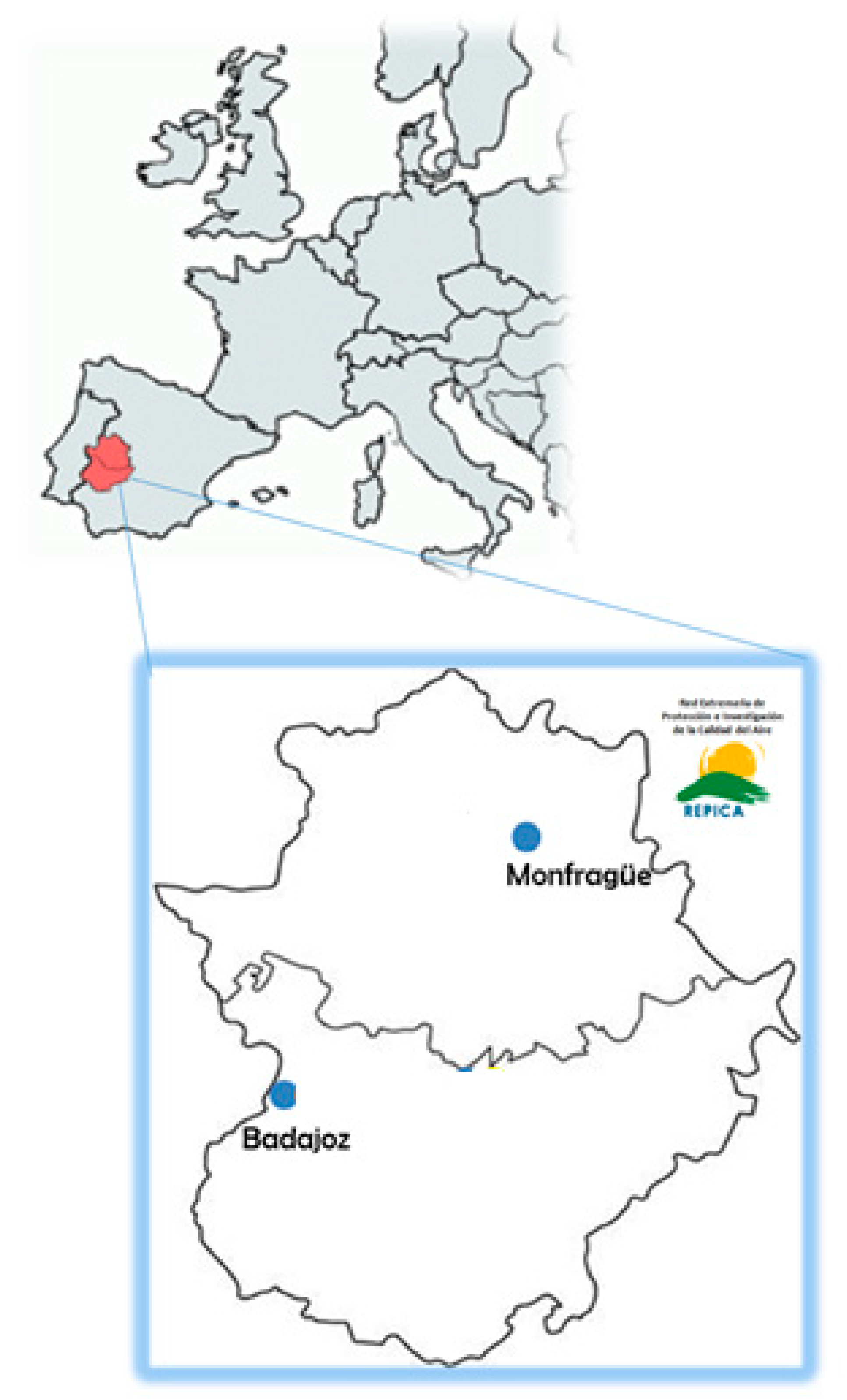
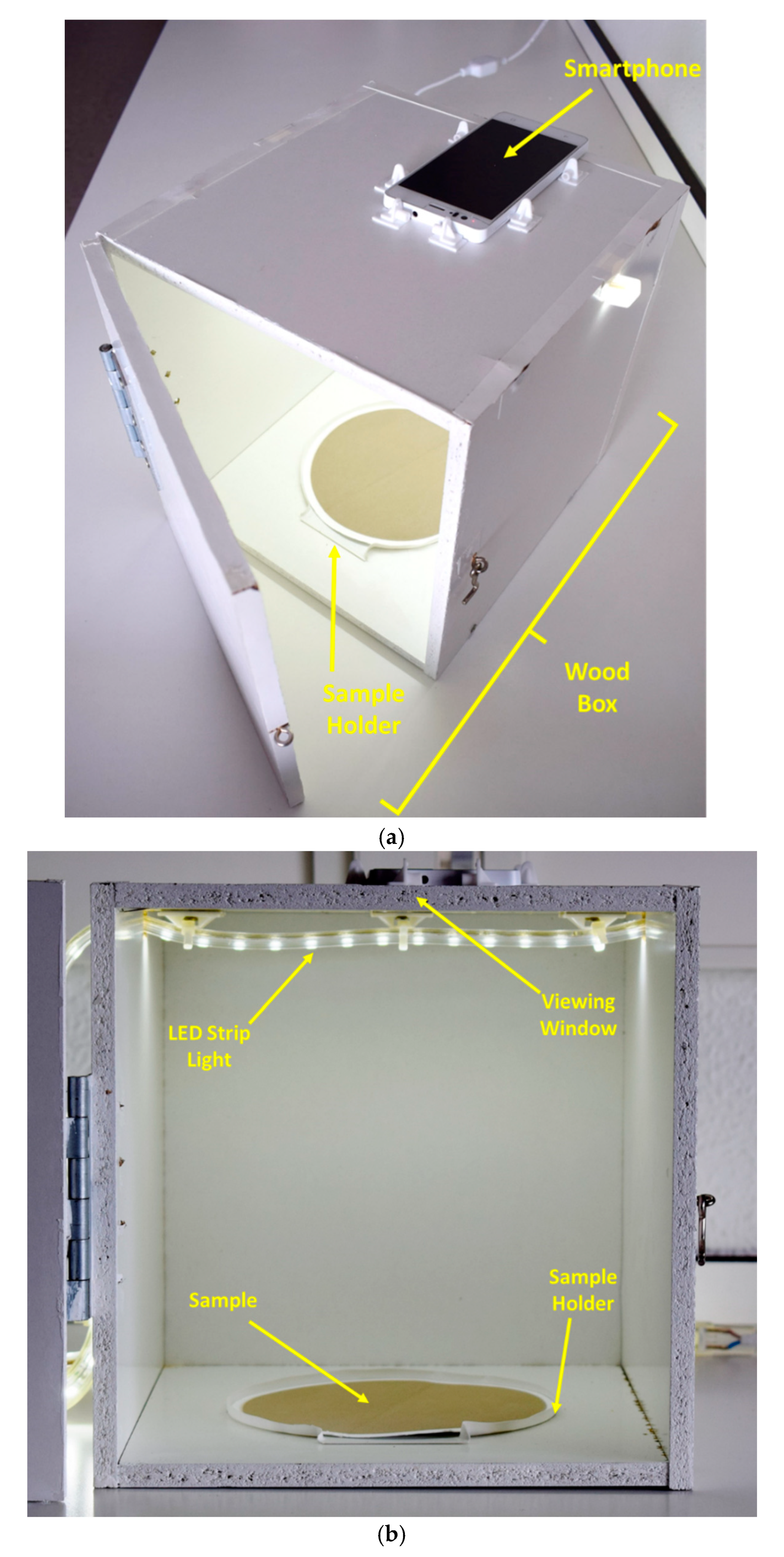
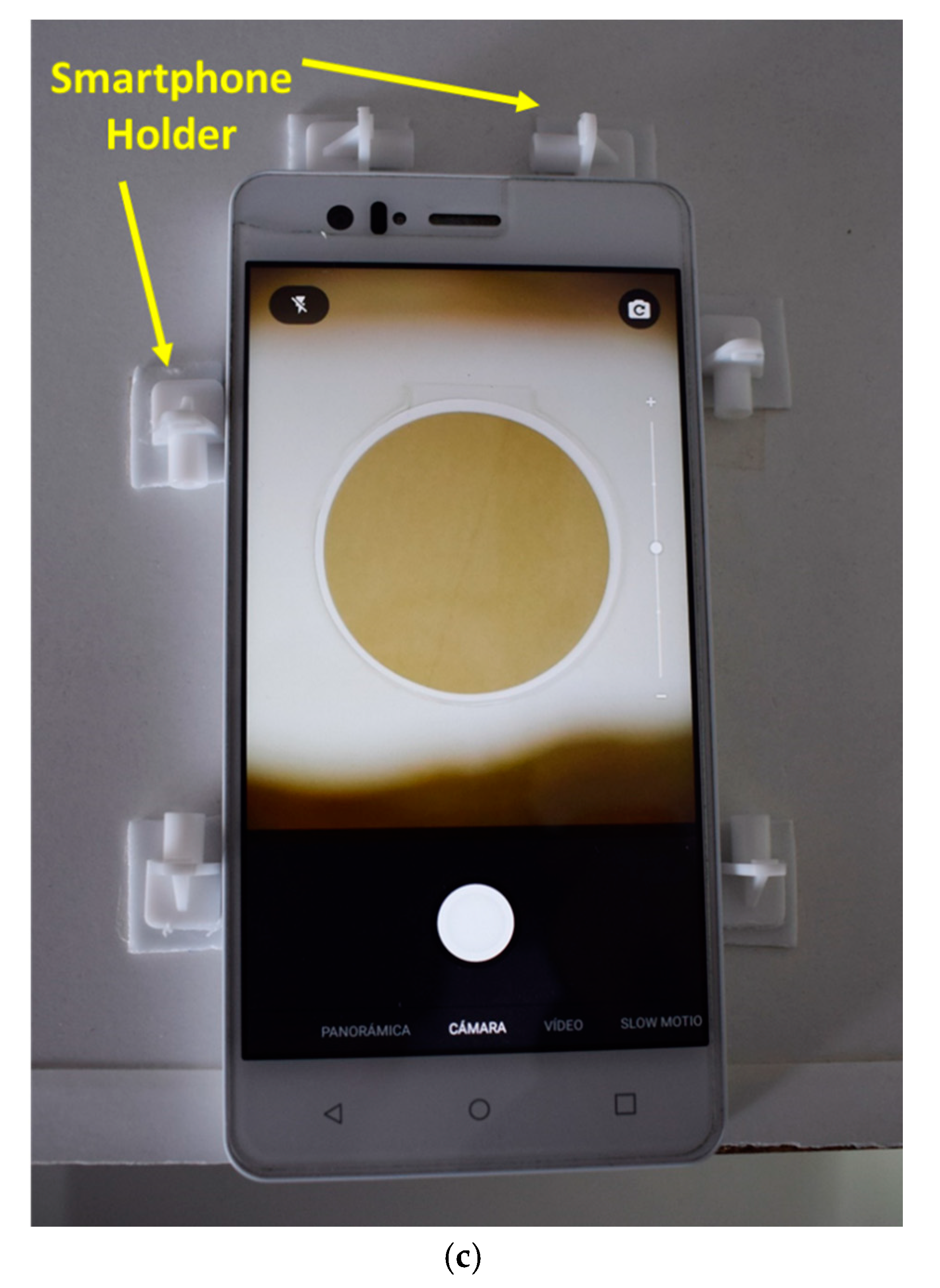
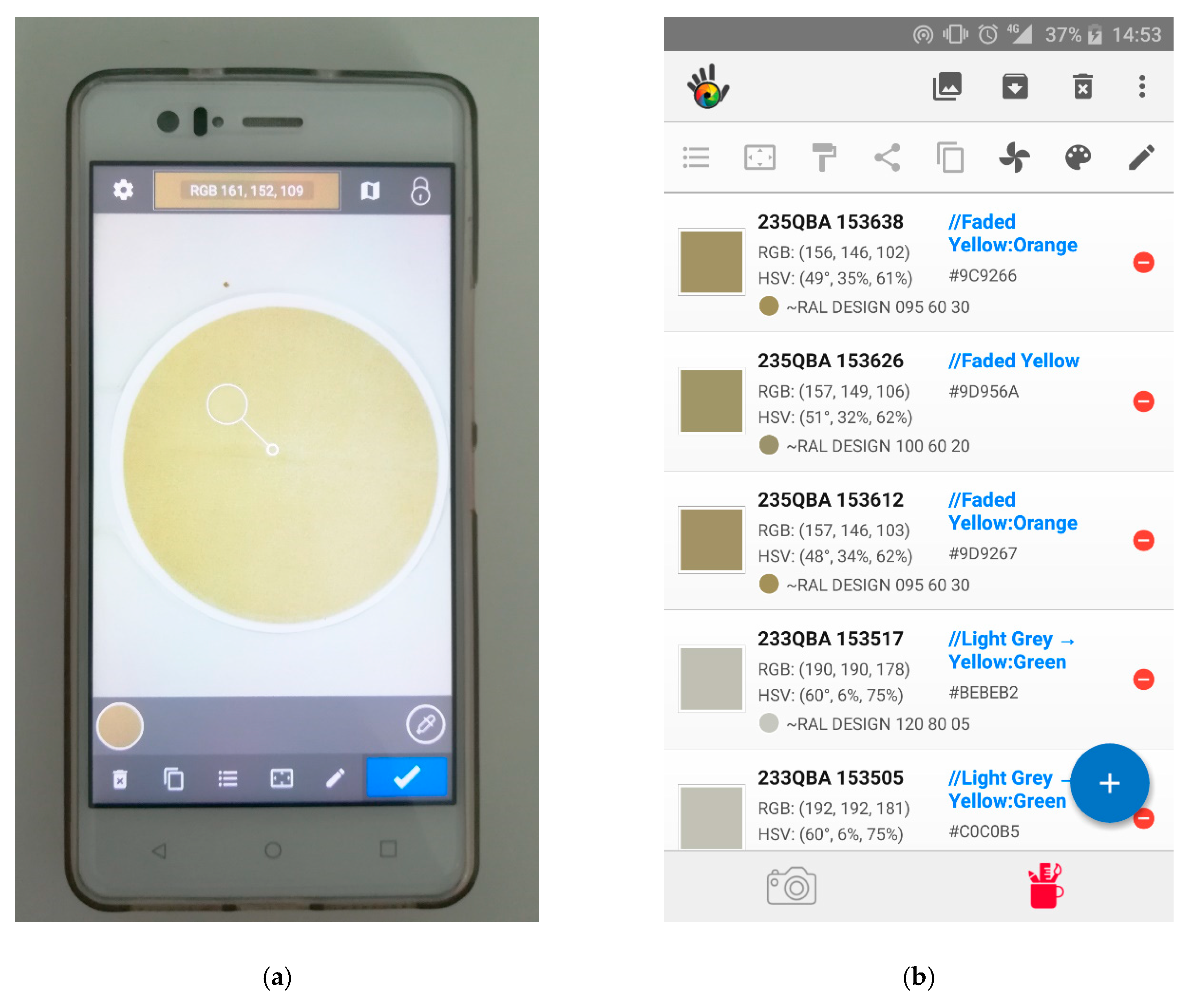
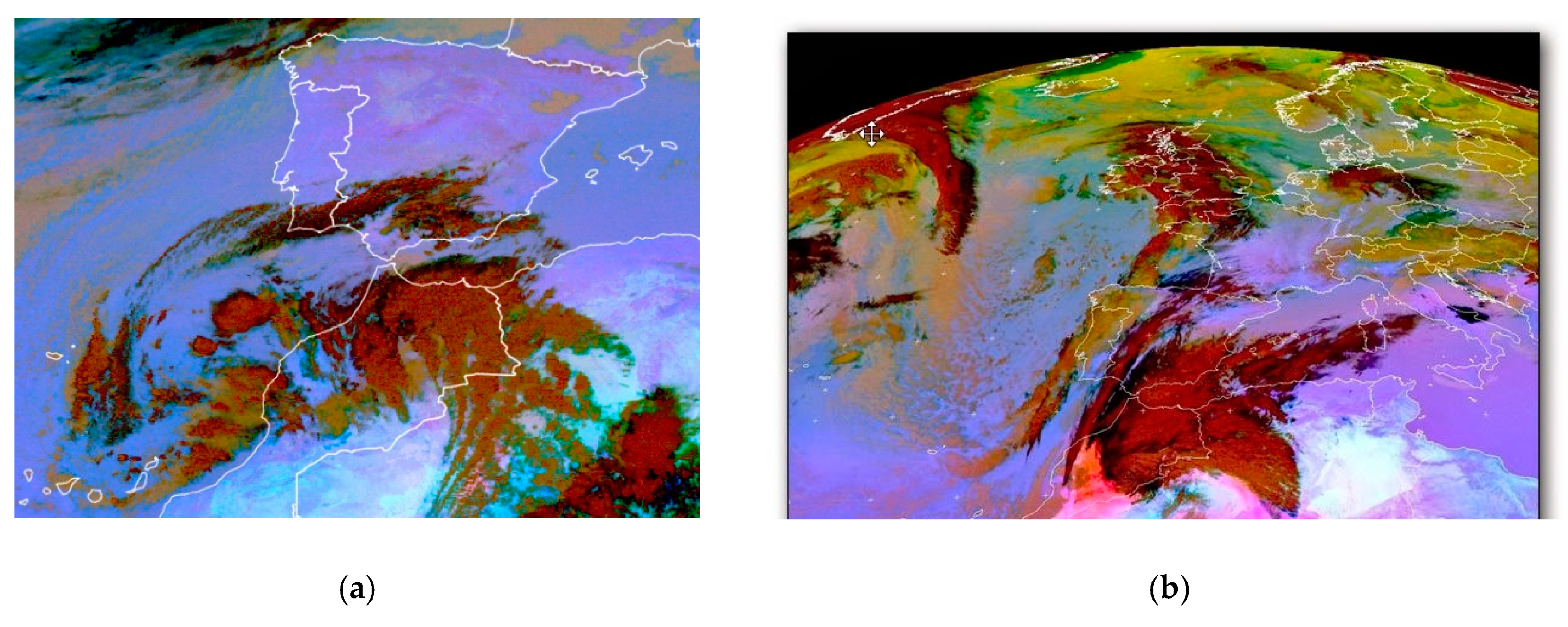
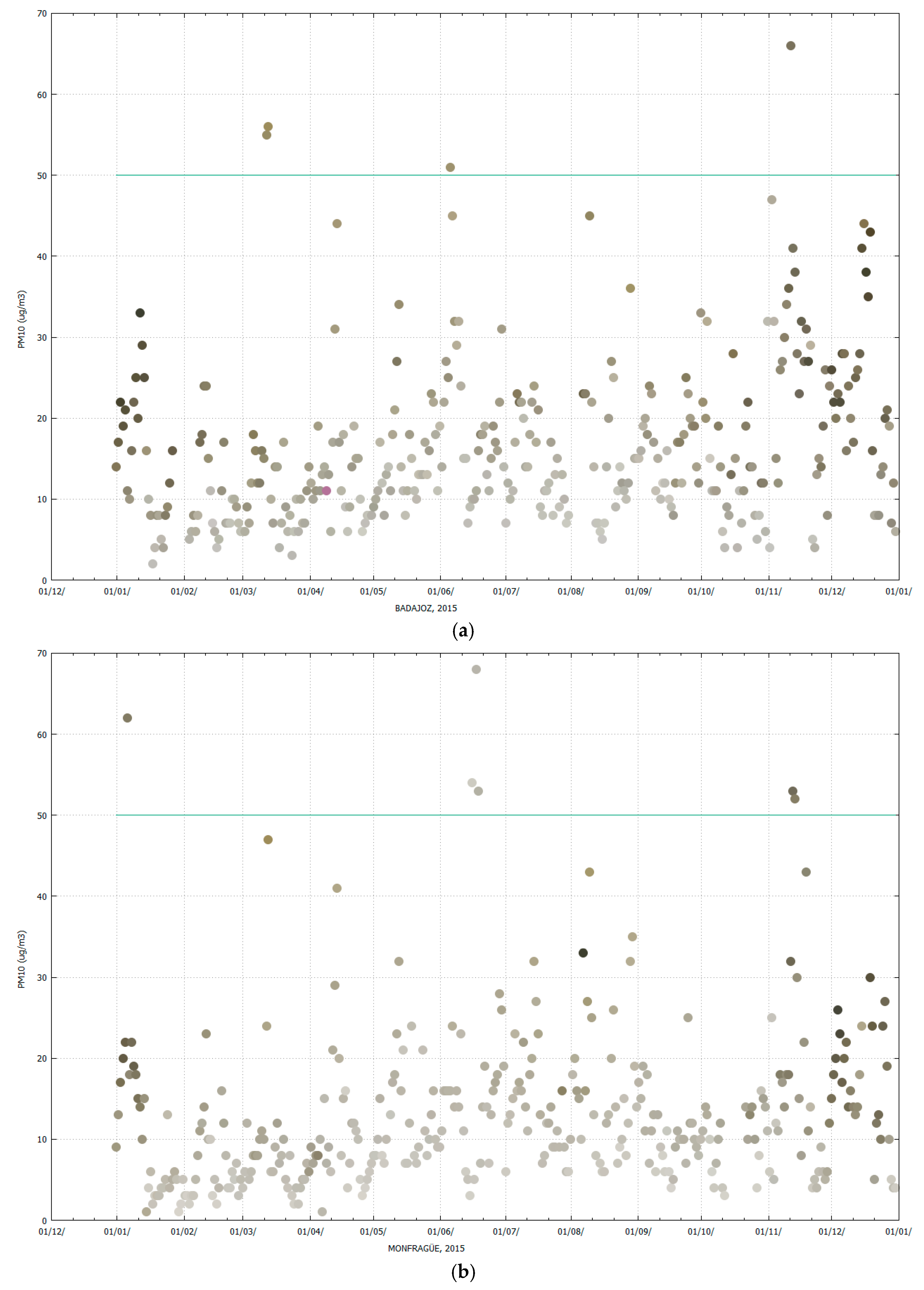
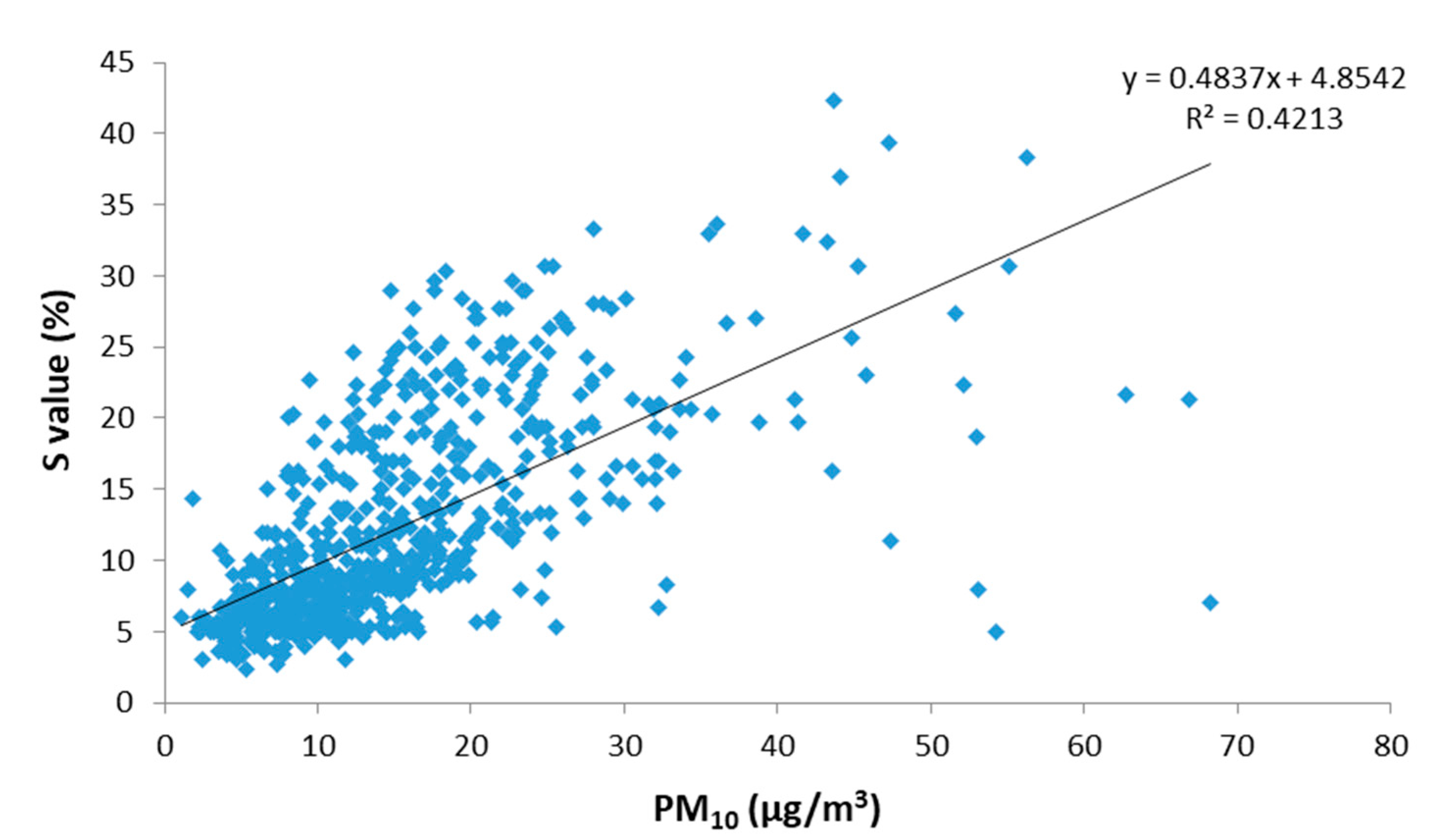
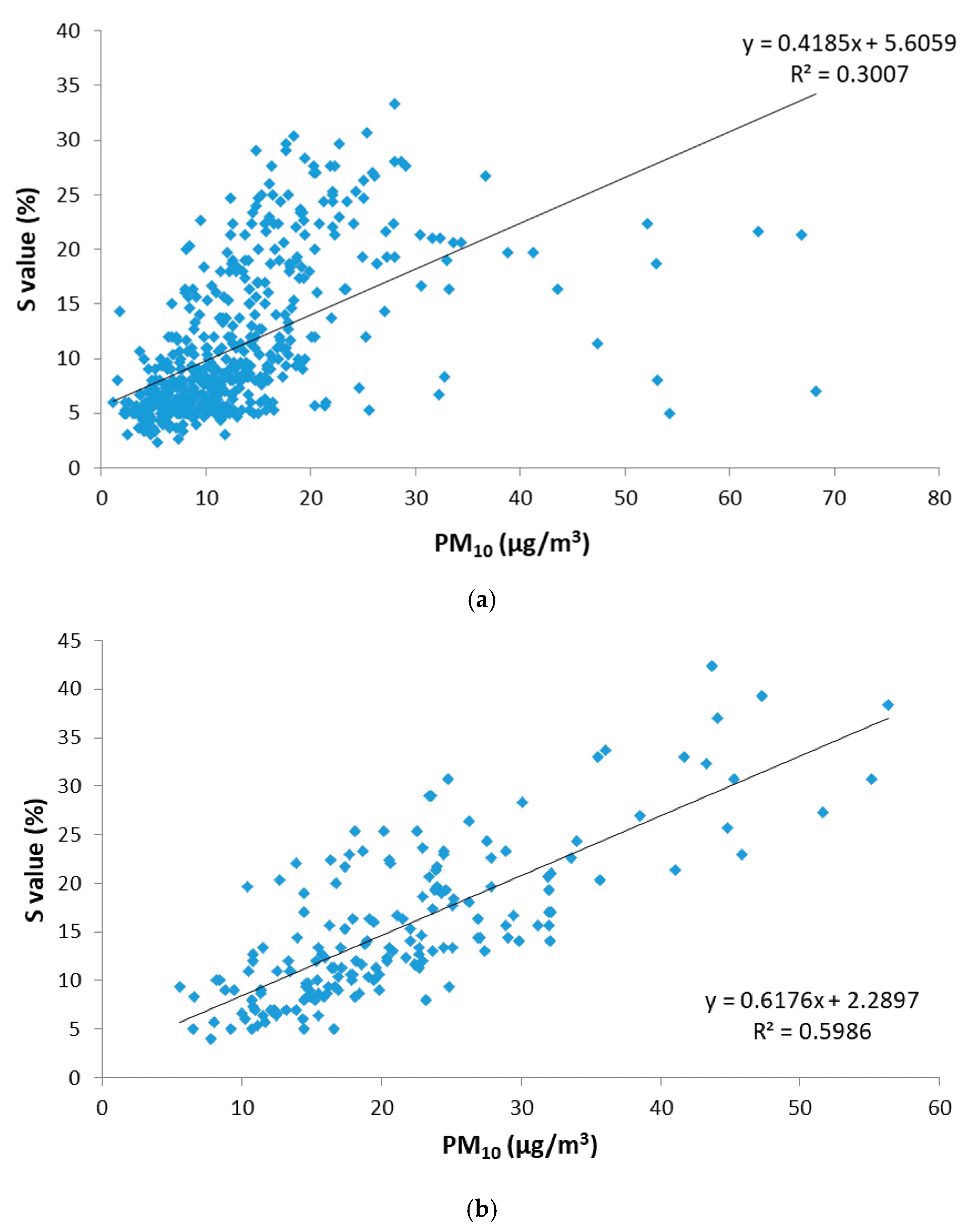
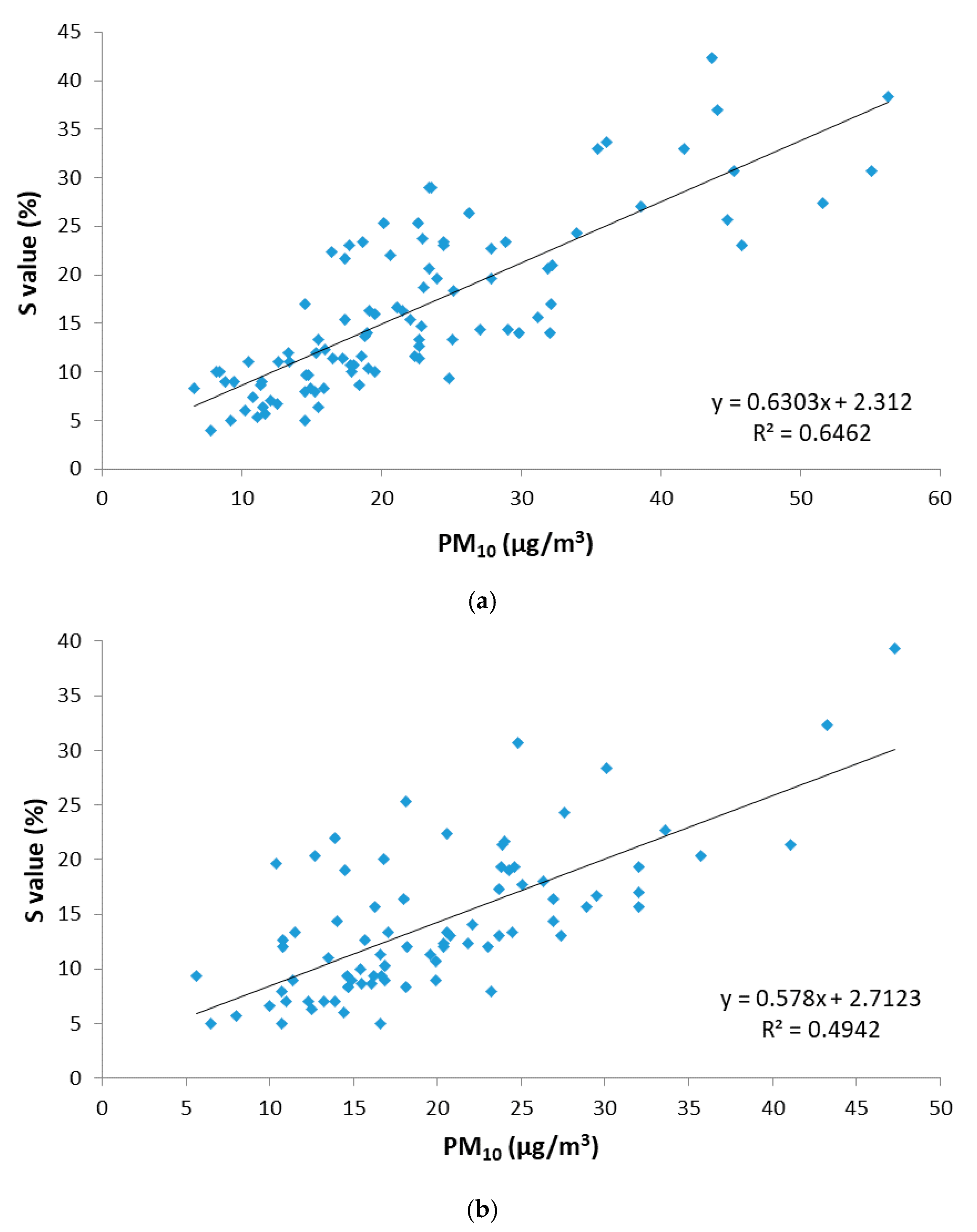
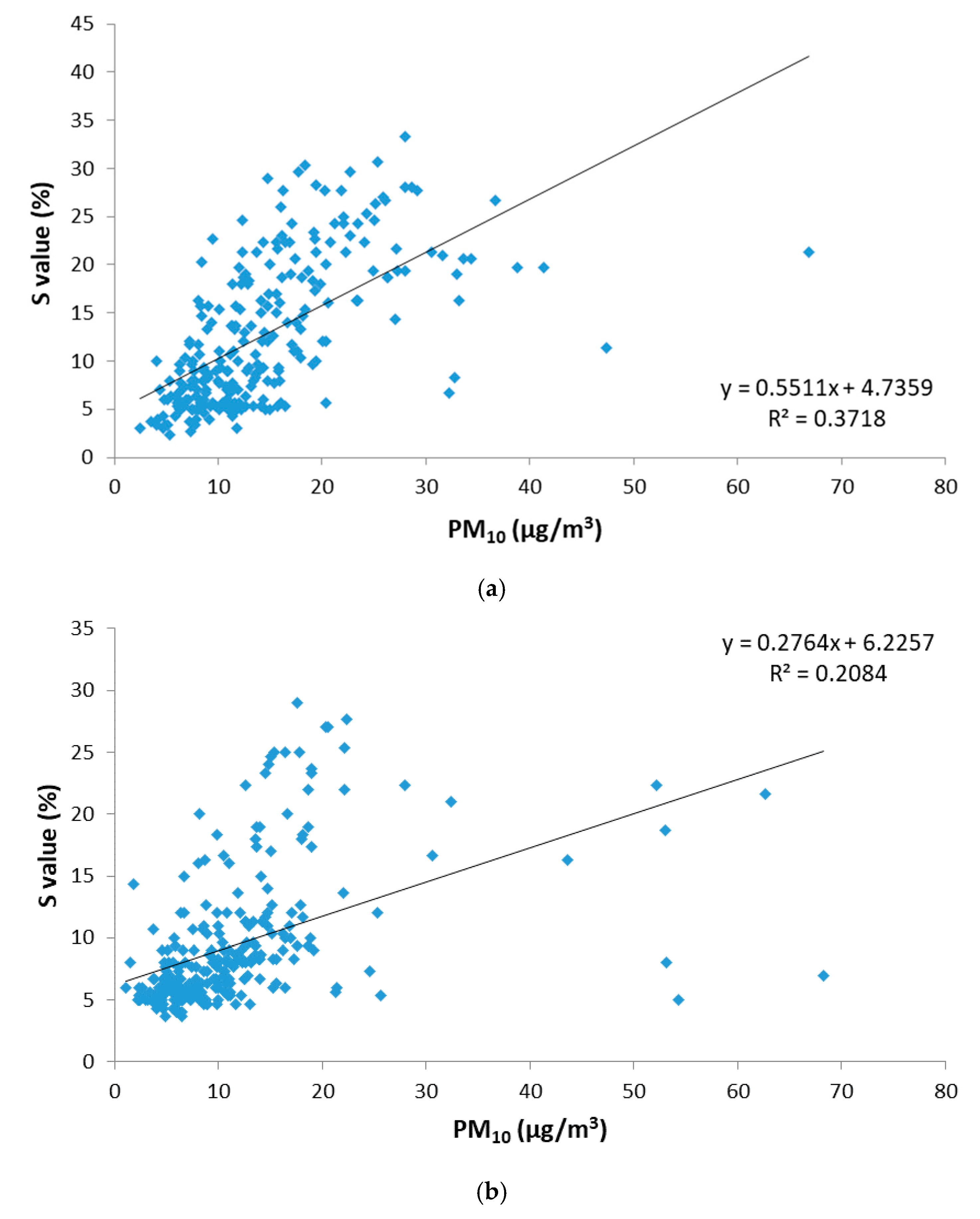
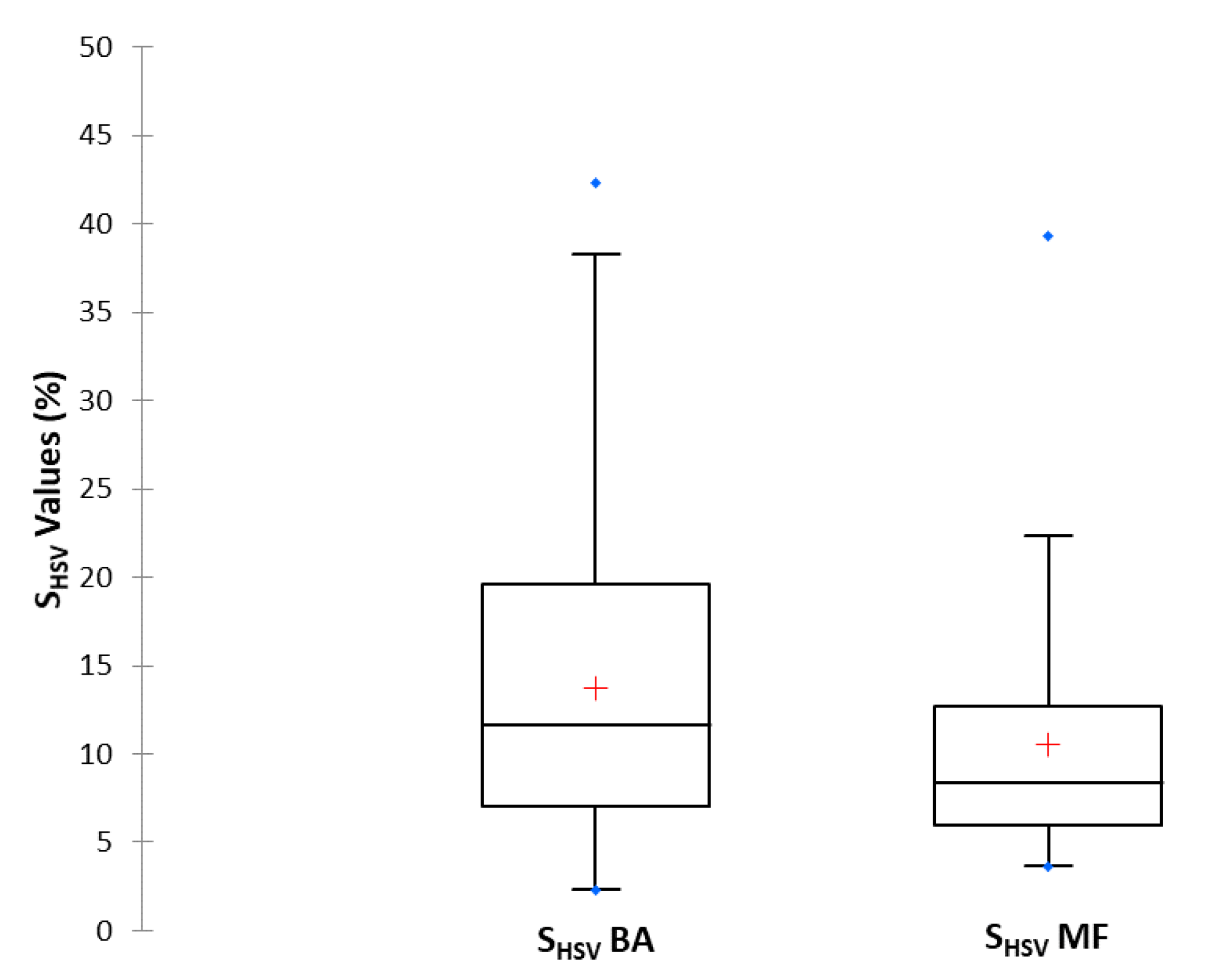
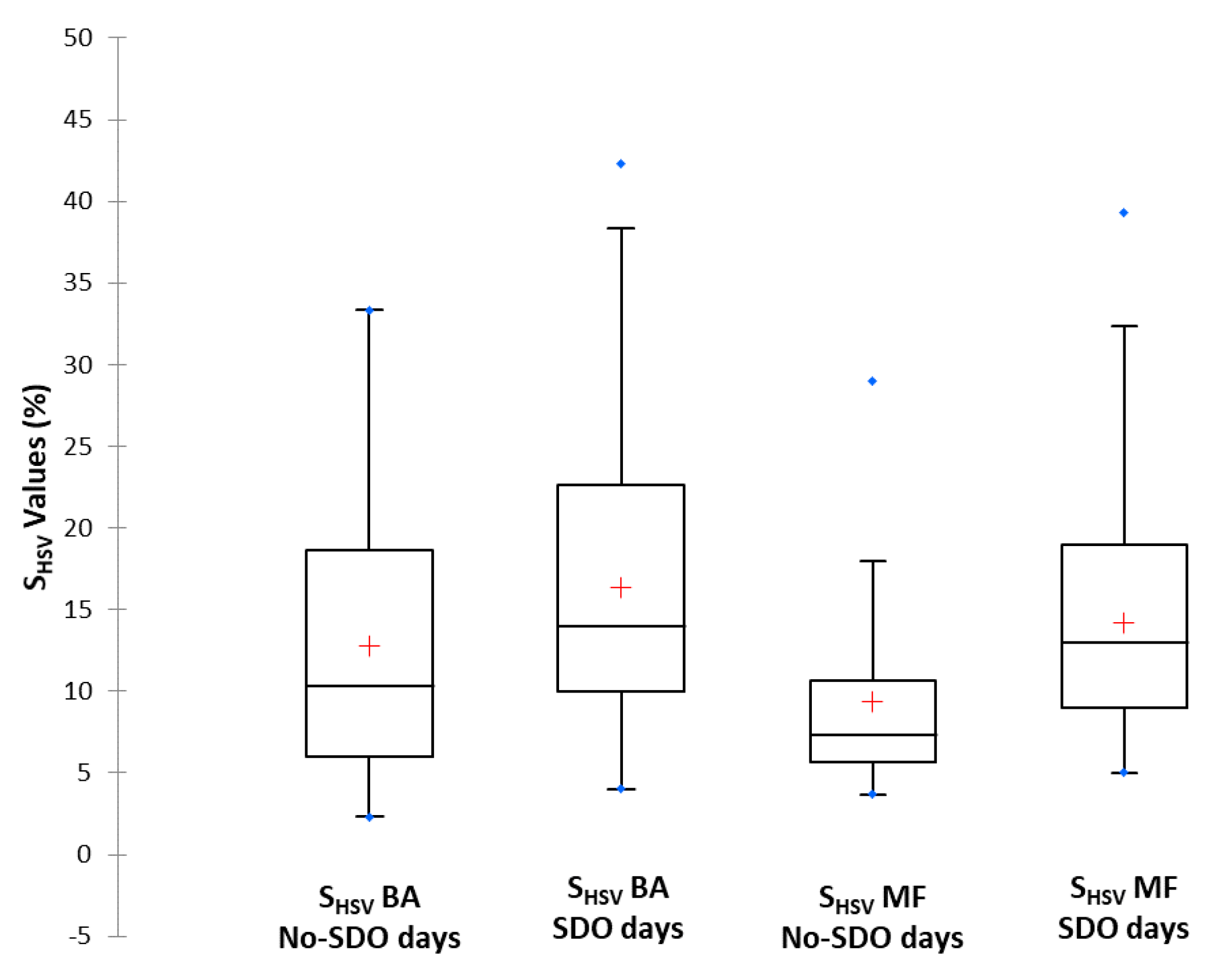
| Red (R) | Green (G) | Blue (B) | Hue (HHSV) | Saturation (SHSV) | Value (V) | |
|---|---|---|---|---|---|---|
| Coefficient of Determination, R2 | 0.286 | 0.302 | 0.350 | 0.042 | 0.421 | 0.287 |
| Intercept | 192.594 | 191.143 | 181.990 | 51.703 | 4.854 | 75.560 |
| Slope | −1.639 | −1.757 | −2.161 | −0.085 | 0.483 | −0.646 |
| Hue (HHSL) | Saturation (SHSL) | Luminance (L) | Luminosity (Lu) | Lightness (Li) | Average (Avg) | |
|---|---|---|---|---|---|---|
| Coefficient of Determination, R2 | 0.028 | 0.333 | 0.321 | 0.303 | 0.322 | 0.316 |
| Intercept | 51.880 | 7.686 | 73.465 | 190.807 | 187.252 | 188.576 |
| Slope | −0.090 | 0.180 | −0.746 | −1.761 | −1.899 | −1.853 |
© 2019 by the authors. Licensee MDPI, Basel, Switzerland. This article is an open access article distributed under the terms and conditions of the Creative Commons Attribution (CC BY) license (http://creativecommons.org/licenses/by/4.0/).
Share and Cite
Carretero-Peña, S.; Calvo Blázquez, L.; Pinilla-Gil, E. Estimation of PM10 Levels and Sources in Air Quality Networks by Digital Analysis of Smartphone Camera Images Taken from Samples Deposited on Filters. Sensors 2019, 19, 4791. https://doi.org/10.3390/s19214791
Carretero-Peña S, Calvo Blázquez L, Pinilla-Gil E. Estimation of PM10 Levels and Sources in Air Quality Networks by Digital Analysis of Smartphone Camera Images Taken from Samples Deposited on Filters. Sensors. 2019; 19(21):4791. https://doi.org/10.3390/s19214791
Chicago/Turabian StyleCarretero-Peña, Selena, Lorenzo Calvo Blázquez, and Eduardo Pinilla-Gil. 2019. "Estimation of PM10 Levels and Sources in Air Quality Networks by Digital Analysis of Smartphone Camera Images Taken from Samples Deposited on Filters" Sensors 19, no. 21: 4791. https://doi.org/10.3390/s19214791
APA StyleCarretero-Peña, S., Calvo Blázquez, L., & Pinilla-Gil, E. (2019). Estimation of PM10 Levels and Sources in Air Quality Networks by Digital Analysis of Smartphone Camera Images Taken from Samples Deposited on Filters. Sensors, 19(21), 4791. https://doi.org/10.3390/s19214791






